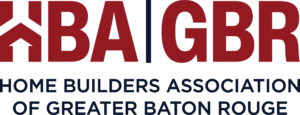
Founded in 1984 by Jim McShane, McShane Construction Company built its first multifamily project in 1998 and has now built nearly 18,000 units. McShane’s expansive multifamily portfolio includes luxury, market-rate, affordable and mixed-income residences; supportive housing, independent living, assisted living and memory care senior living communities; and off-campus student housing.
The McShane Construction Company is part of larger organization that also comprises another construction company and a commercial real estate group. The construction company is known nationally as a premiere multifamily general contractor serving clients in 33 states from its headquarters in Chicago and additional offices in Phoenix, Irvine, Calif., Auburn, Ala., and Madison, Wis. President Jeff Raday, PE, articulates the company’s goals: “Exceed client expectations, deliver high-quality projects, and build lasting relationships.”
That’s supported by the fact that 75% of its projects are for repeat clients. Since 2016, overall revenue has grown 69%, with revenue from its multifamily segment increasing by 78%. McShane’s culture cultivates homegrown talent; many of its leaders joined McShane as interns or new college graduates and developed their careers with the company. Its voluntary turnover rate is 7.2%, compared to the industry average of 26.4%.
The company actively looks for talent through multiple pipelines, and implements formal internship, mentorship and future leader programs to help develop that talent. It also looks for opportunities to employ local residents to work on its projects through existing community groups that can offer opportunities for residents to participate in the construction process.
The firm also is committed to collaborating with minority and women business enterprises, and regularly hires minority and female candidates. In 2019, 13.7% of its staff were members of minority groups. Women comprise 21% of its workforce — compared to an industry average of 9.1% — with 18.8% of those women in leadership roles.
“As a family-owned company, workplace culture is very important to us and something we’ve worked to cultivate over the years,” Raday stated. “Each of our employees play an important role in the success of our firm, so we strive to provide them with an environment that fosters growth, learning and a sense of community.”
The company credits its success to adhering to the values that have guided it since its founding: honesty, integrity and partnership. It’s helped make the company a winner — specifically the 2019 Builder of the Year for the Multifamily Pillars of the Industry Awards.
If you are or know another successful builder in the multifamily industry, submit an application today for the next awards cycle. 2020 Multifamily Pillars of the Industry applications are due Aug. 31. Apply today.

















